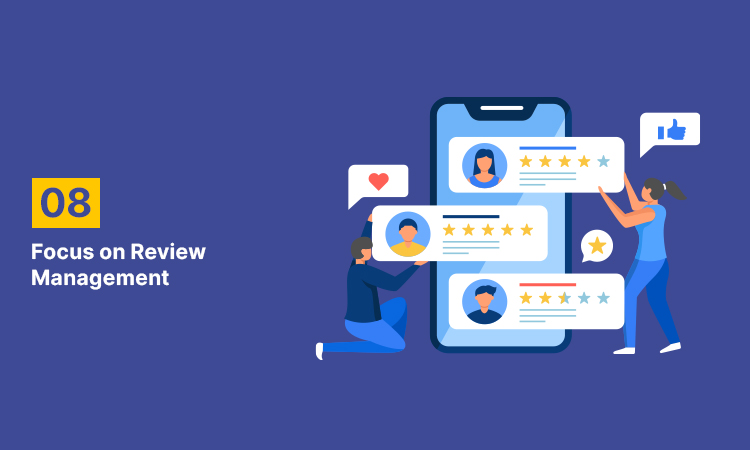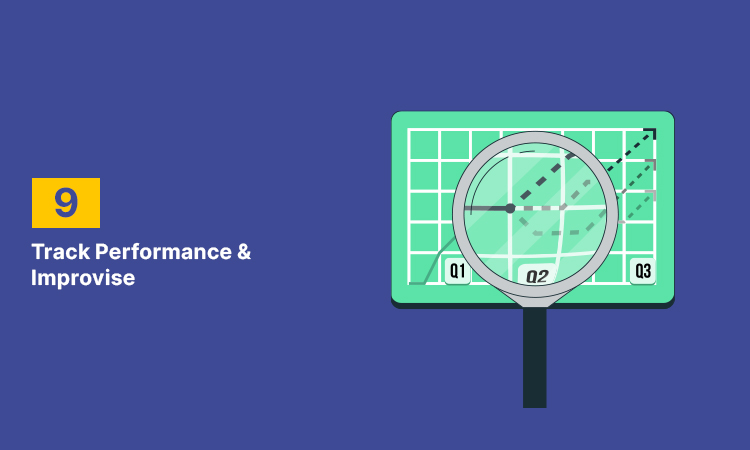The pest control industry is highly competitive. A solid online presence is important to make an impact if you own a pest control company. 60% of people online across the web look for businesses through local search. And targeting the local search queries requires you to leverage pest control SEO to drive relevant traffic.
Search engine optimization (SEO) for pest control companies boosts their visibility & credibility. It builds trust in the eyes of your customers & search engines.
Pest control SEO optimizes your website to rank higher in search engine results. Effective SEO makes finding your website easier for your target audience.
Key tactics in SEO include Keyword research, builԁing backlinks, and high-quality content creation. Attracting leads and converting them are among the primary goals of SEO.
Pest control SEO campaigns allow you to target people looking for your pest control services more directly. You won’t need to rely on chance encounters. Your ideal clients will find you at the right time as a result of SEO. This will be exactly when they look online for pest control services.
If you want to learn more about SEO for pest control companies, then keep reading. This guide will explore the ins and outs of pest control SEO. So, keep on reading till the end.
What is Search Engine Optimization (SEO) for Pest Control?
Pest control SEO involves optimizing online сontent to ensure that when people search for pest control solutions, your business appears prominently in search engine results pages.
Relevant keyworԁs, high-quality content, and link building links are all part of the process. This increases visibility & attracts potential customers.
96% of customers learn about local businesses online. Pest control businesses can reach a wider audience and generate more leads with effective SEO. This helps grow your customer base. Greater Online presence results in more business for your pest control company.
Why Does SEO Matter for Pest Control?

The demand for pest control SEO has gone up over the years. Driving relevant traffic and leads gets a lot easier with a solid SEO campaign. Here is a look at some of the reasons why SEO is important for pest control services:
- Boost Your Online Visibility
Purchasing from local brands is preferred by most consumers. The right optimization approach can pave the way for top rankings on SERPs. With that, potential customers are more likely to find your services.
- Beat Your Competition
Competition in the pest control market requires you to stand out. Pest control SEO allows your business to surpass competitor. Your business website appears more prominently in search results. And this makes it more likely for potential customers to choose your services over others.
- Reach Your Ideal Clients
92% of online searchers will choose businesses from the first page of search results. Tailored SEO efforts enables you to reach your target demographics in a quicker way. This targeted approach ensures that your pest control services reach the right audience. Increasing the likelihood of attracting ideal clients, SEO helps speed up your business growth.
- Get Qualified Leads
Pest control SEO attracts qualified leads. Higher rankings in search results enable your pest control SEO campaign website to attract relevant users. These are the ones genuinely interested in your pest control services. This results in higher conversion rates for your business.
- Reduce Your Marketing Costs
Around 40% of local SEO campaigns drive a 500% or better return on investment. Compared to trаԁitionаl marketing methods, such as print advertisements or billboards, pest control SEO offers a cost-effective solution for promoting your pest control services.
9 Steps to Master Pest Control SEO and Boost Your Ranking
64% of small businesses have a solid local SEO strategy. As compared with traditional SEO, using a local approach drives better results. Below is our comprehensive guide for pest control SEO:
- Research Your Competition

Most pest control companies skip this step. Understanding your сomрetition is a crucial for pest control services. Competition analysis gives you insights into what they are doing that’s working for them. You can identify opportunities to differentiate yourself from them.
Here are a few tips to research your pest control competition:
- Start by identifying who your main competitors are in the pest control industry. Search based on your geographical area.
- Take a close look at your competitors’ websites. Social media profile analysis works too. Read their online reviews to learn about their services.
- Pay attention to their pest control SEO tactics. See their Keyword usage. Content quality assessment should be look at as well.
- Identify areas where your competitors excel and where they may be lacking. Finding their weaknesses and сарitаlizing on them should be your goal.
- Conduct Local Keyword Research

For a pest control company, researching keywords related to a local area is essential. This approach helps attract more customers in your location.
Potential customers use specific terms when looking for pest control services. Keyword research helps pinpoint these phrases as target keywords.
Here’s how to conduct local keyword research the right way:
- Identify Core Services
List your primary pest control services. Termite control, rodent control, or bed bug control are some of the common examples. These services will form the foundation of your keyword research.
- Use a Keyword Research Tool
Use keyword research tools like Google Keyword Planner, SEMrush, or Ahrefs. These keyword tools help identify relevant keywords with local search intent. Focus on keywords that include location-specific modifiers. These include city names, neighborhoods, or zip codes.
- Analyze Competitor Keywords
Keywords your local competitors are targeting in their pest control SEO strategies can be a goldmine. This can provide valuable insights into popular search terms in your area. Identifying opportunities for optimization gets a lot easier this way.
- Consider Long-Tail Keywords
There are more than 1.5 billion “near me” local searches per month. Long-Tail keywords like this should be your focus. These phrases typically have a lower search volume. But the carry higher conversion rates. Include variations of your core services combined with local modifiers to target these niche keywords.
- Review Search Trends
Monitor local search trends & seasonal variations in pest control demand. Adjust your keyword strategy accordingly to capitalize on peak seasons and emerging trends in your area.
- Focus on On-page SEO

On-page SEO refers to the optimization of your pest control web pages. This goal is to improve their search engine rankings. Attracting more organic traffic is the focus of this step. Here are some key on page pest control SEO factors to focus on:
- Title Tags & Meta Description Optimization
A unique and descriptive title tag is a must for every web page. The meta description should also include relevant keywords. It should accurately represent the content of the web page.
- Create High-Quality Content
Search queries of your target audience should guide your content creation. Incorporate relevant keywords naturally throughout the content while maintaining readability & value.
- Optimize Headings and Subheadings
Use keyword-rich headings (H1, H2, H3, etc.). Structure your content logically. This will make it easier for search engines to understand the hierarchy & relevance of different sections.
- Optimize Image Alt Text
Descriptive alt text for images on your website are important too. Use relevant keywords where appropriate. Alt text improves accessibility for visually impaired users. It also provides search engines with additional context about your content.
- Internal Linking
Internal links throughout your website can guide users to related content. This helps improve the navigation as well. Internal linking distributes link equity and strengthen the overall authority of your website.
- Build a Solid Foundation with Technical SEO

Technical pest control SEO ensures that your website is easily accessible & crawlable. In the context of pest control services, here are some technical SEO elements to focus on:
- Optimize Site Structure
Organize your website’s structure in a logical hierarchy. This makes it easy for both users and search engine crawlers to navigate. Dedicated pages for each pest control service you offer should be created. Make sure that they are properly linked from your main navigation menu & sitemap.
- Improve Page Speed
Pest control website should load in 3 seсonԁs or less. Compress the images to reduce the loading time. Magnification of CSS & JavaScript files can also work. You can also do that by leveraging browser caching. Fast-loading web pages improve user satisfaction. Bounce rates decrease as well with this process.
- Ensure Mobile Compatibility
Mobile device usage for internet as increased a lot. This makes mobile-friendliness important for your pest control website. Responsive design techniques should be used to provide a seamless browsing experience. It should be same across different screen sizes and devices.
- Implement Structured Data Markup
Implement structured data markup for your pest control website pages. Search engines get additional context about your pest control services through structured data markup. It can also help you get your place in rich snippets, such as star ratings and service descriptions.
- Fix Crawl Errors
Monitor crawl errors on your pest control website. You can do that using tools like Google Search Console. Address the crawl errors and broken links. Fix duplicate content issues. This ensures that search engine crawlers can effectively index and understand your website’s content.
- Secure Your Website
Secure your website with HTTPS encryption. Protection of user data promotes trustworthiness. Migrating to HTTPS can potentially have a positive impact on your rankings.
- Create & Optimize Your Google Business Profile

Creating a robust Google Business Profile for your pest control service is vital in pest control SEO. Optimizing it with accurate information & engaging content. Your chances of appearing in search results can get a boost with a solid profile. Businesses can drive qualified leads with this method.
- Pest control business name, address, and phone number (NAP) should be accurate. These details should be consistent across all online platforms.
- Add high-quality photos in the profile. These should showcase your pest control services and team members. You can also add office space imagery to further humanize your brand.
- Satisfied customers should be encouraged to leave positive reviews on your Google Business Profile. This helps build trust & credibility.
- Utilize Google Posts to share updates and promotions. Announce special offers with your audience directly from your profile.
- Monitor customer reviews and respond to them.
- Create Helpful Content

Your pest control SEO efforts should include production of valuable content. Informative content is crucial for establishing your authority & attracting potential customers to your pest control website. It is one of the important ranking factors. You can hire a pest control SEO agency to streamline content creation.
Share helpful resources & and guides. These should be related to pest control issues that can position your business as a trusted source in the industry.
Engaging content around pest control can improve your website’s visibility. It may encourage website visitors to return for more information in the future.
- Pest control SEO content should address common concerns. It should provide practical solutions through blog posts or articles.
- Offer educational resources such as infographics, videos, or downloadable guides to help users understand pest management techniques.
- Share customer testimonials and success stories. These showcase your expertise & reliability in solving pest problems.
- Stay updated on the latest industry trends & news. This enables you to provide timely and relevant content that resonates with your audience.
- Use a conversational tone. Avoid jargon to make your pest control content engaging to a wide range of readers.
- Build a Solid Backlinks Profile

A solid backlink profile for your pest control website is essential for improving its authority. It may also impact visibility in search engine results. An important off page SEO step, backlinks serve as a vote of confidence for the quality & relevance of your content.
Earn backlinks from reputable websites. These should be relevant to yours in the pest control industry. This can enhance your website’s сreԁibility and trustworthiness in the eyes of search engines. An SEO company can help you with the process.
Acquire high-quality backlinks from authoritative sources. These could be industry associations and directories. You can also approach reputable blogs or publications. This improves the impact of your pest control SEO campaigns.
Valuable and shareable content can naturally attract backlinks from other websites. It is the best option for link building when you have limited financial resources.
- Focus on Review Management

Review management maintains a positive online reputation for pest control companies. Businesses can attract more сustomers with the right review management approach. 76% of consumers consistently peruse online reviews when searching for local businesses.
Ask customers to leave honest reviews for your services. They can do that on Google Business Profile, Yelp, and Facebook. These reviews showcase your excellent service and build trust with potential clients.
Respond professionally to both positive and negative reviews. Your commitment to customer satisfaction should be reflected in your response.
Implementing a proactive review management strategy helps you stay informed about customer feedback. It may allow you to leverage positive reviews as social proof to attract new customers.
Regularly monitor review platforms. Engage with your audience and continuously strive to provide exceptional service. This can help cultivate a positive online reputation for your pest control business.
- Track Performance & Improvise

Continuously monitor the performance of your pest control marketing efforts. It is essential for optimizing your strategies & achieving long-term success.
Use tools like Google Analytics to track website traffic and user behavior. It can also help track conversion rates. Identification of potential improvements can get a lot easier this way.
Pay attention on the key performance indicators (KPIs). These include organic search traffic and lead. Customer acquisition costs may also be a KPI for your pest control business. You can measure the effectiveness of your successful SEO campaigns with this approach.
Regularly review your data and analyze trends. Experiment with new approaches to refine your strategies.
Below are a few tips you can use to track and improve the campaign:
- Set specific goals and benchmarks to measure the success of your pest control SEO efforts.
- Use A/B testing to experiment with different strategies. This can help determine what resonates best with your target audience.
- Keep an eye on industry trends and updates in search engine algorithms to adapt your SEO tactics accordingly.
- Get feedback from customers & incorporate their suggestions into your SEO strategies.
- Stay agile and adaptable. The willingness to adjust your approach based on data-driven insights can go a long way for you.
Conclusion: Boost Your Business with Pest Control SEO
Pest control SEO can be difficult to navigate. The tools and strategies mentioned in this guide can help attract & retain clients. If you want to simplify things, you can hire a professional SEO agency to streamline SEO activities for your pest control company.
Hiring an SEO agency takes the pressure off your shoulders. These agencies have expertise in the latest SEO tools & techniques to help take your pest control business to the next level. If you want to go with a DIY approach, this guide has everything you need to get started with SEO for your pest control company.


